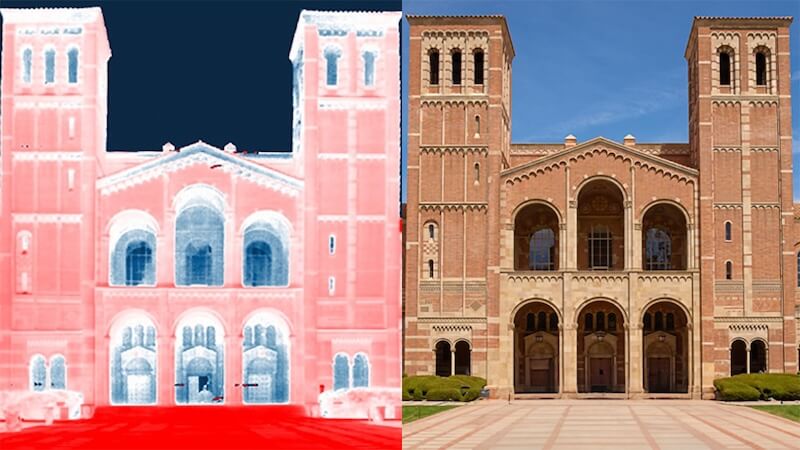
Engineers have developed a new type of cooling and heating technology for buildings that is cost-effective, environmentally friendly and particularly energy efficient. Many air conditioning systems could become obsolete.
Climate change is causing average temperatures to rise worldwide. It is therefore hardly surprising that solutions for cooling buildings are more in demand than ever. Engineers at the University of California (UCLA) agree. They have developed a cost-effective and environmentally friendly method for cooling buildings in the summer and heating them in the winter.
The method uses common building materials that absorb or radiate heat to regulate temperature. The research team, led by Aaswath Raman, developed a technique that manipulates the movement of radiant heat through common building materials to optimize thermal management.
Alternative to air conditioning: Sustainable cooling and heating technology
Radiant heat, carried by electromagnetic waves, moves in different ways between buildings and their surroundings. One common problem is that buildings with fewer upward-facing surfaces are difficult to cool in summer, as these absorb heat from the floor and adjacent walls.
In winter, however, such structures lose heat quickly when the outside temperature drops. The researchers therefore identified materials such as polypropylene. These absorb and emit heat particularly effectively in a specific infrared spectrum. Such materials, which are often found in household plastics, could be used in the future to thermoregulate buildings.
Approach can be easily scaled
Passive cooling and heating technology could contribute significantly to energy savings by reducing the need for air conditioning and heating systems, which are often expensive to operate and contribute to global CO₂ emissions.
The approach is also scalable and could be particularly important in low-income communities that have little or no access to cooling and heating systems. Raman and his team plan to expand their approach to larger buildings and demonstrate its real-world energy savings, starting in heat-prone areas of Southern California.
Also interesting:
Source: https://www.basicthinking.de/blog/2024/08/18/nachhaltige-kuehl-und-heiztechnik/


